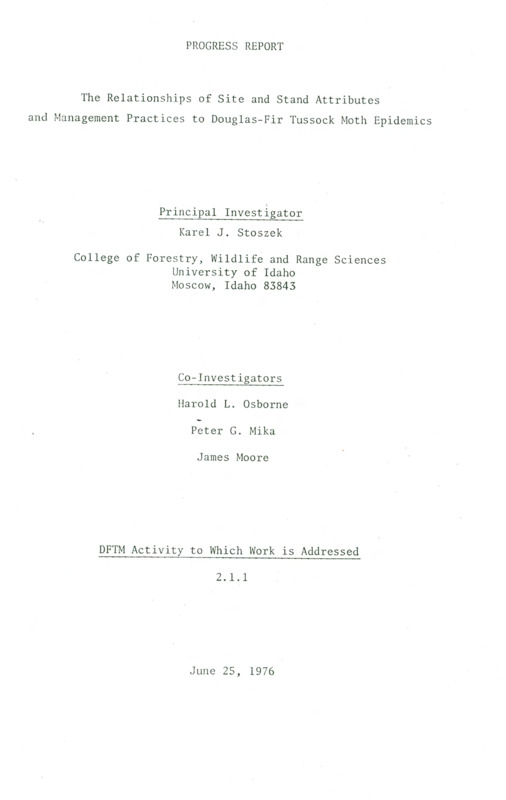PDF PREVIEW
Progress Report: The Relationships of Site and Stand Attributes and Management Practices to Douglas-fir Tussock Moth Epidemics Item Info
- Title:
- Progress Report: The Relationships of Site and Stand Attributes and Management Practices to Douglas-fir Tussock Moth Epidemics
- Creator:
- Stoszek, Karel J.
- Date Created:
- 1976
- Description:
- Site and stand characteristics were described and defoliation intensities ocularly assessed on a total of 71 study units; soil data were taken from 45 study units. Detail information to estimate defoliation, foliar surface and biomass was obtained by destructive sampling of 52 grand fir and 53 Douglas-fir trees on 35 study units. All data taken (with the exception of soil data) were processed for computer analysis. The defoliation information gained from the destructively sampled trees was used to develop regression estimators for correcting ocular defoliation estimates for each host species. For grand fir, a linear model provided a good fir (R^2 = .84). The best fit obtainable for Douglas-fir, however, was poor (R^2 = .45) due to the small range in defoliation intensity for that species found in this study in conjuction with the limited resolution of the ocular estimation technique. Regression estimators for foliar surface area and biomass are presently being developed.
- Document Type:
- Research Article
- Library Call Number:
- IDAHO SB945.T8R44 1976
- Subjects:
- Palouse Range grand fir abies grandis Douglas-fir pseudotsuga menziesii Douglas-fir tussock moth epidemic destructive sampling entomology
- Location:
- Palouse Range
- Department:
- Department of Entomology
- Type:
- Text
- Format:
- application/pdf
Source
- Preferred Citation:
- "Progress Report: The Relationships of Site and Stand Attributes and Management Practices to Douglas-fir Tussock Moth Epidemics", UIEF Research Exchange, University of Idaho Library Digital Collections, https://www.lib.uidaho.edu/digital/uief/items/uief_0089.html
Rights
- Rights:
- In copyright, educational use permitted.
- Standardized Rights:
- http://rightsstatements.org/vocab/InC-EDU/1.0/

